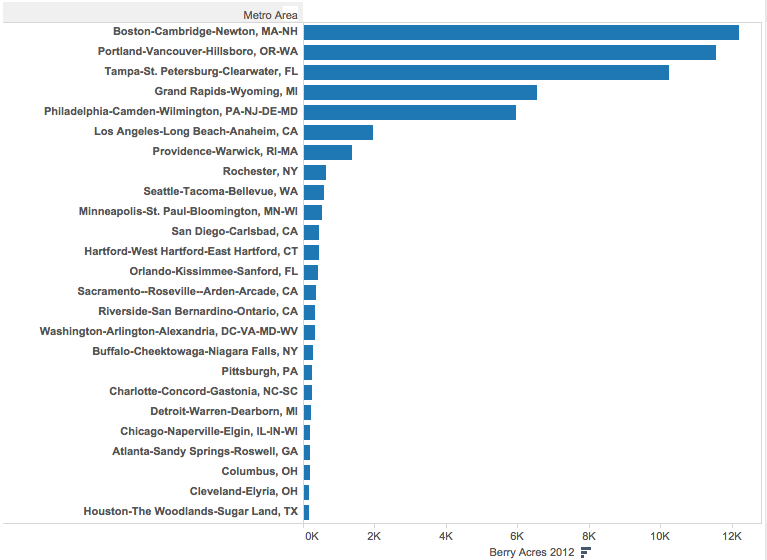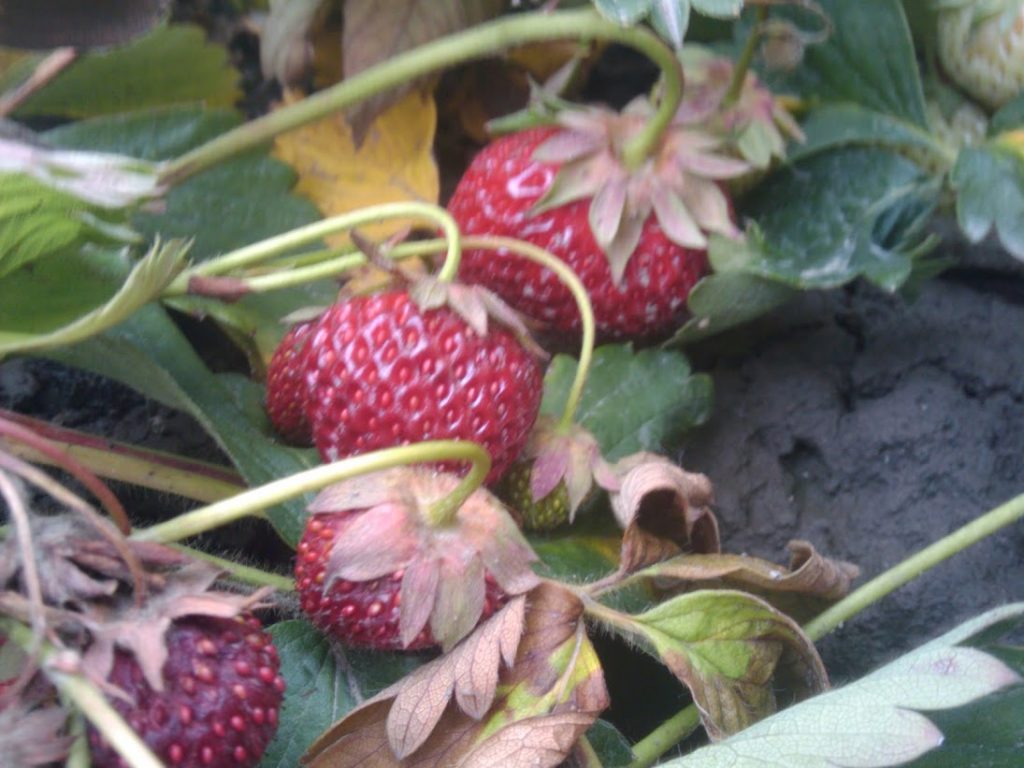Why Boston and Portland are the berry-best metros, and why it matters
Summer is the height of berry season in most of the US, and nothing beats a fresh, locally grown blackberry, blueberry or raspberry. Today we’re ranking large metro areas in the US based on how many berries they grow (which we’re proxying using USDA data for farm acreage devoted to commercially raising berries of one sort or another). While you can find at least some local berries almost everywhere, a few places really have an abundance of summer fruit.
The overall leader is the Boston metro area, which is located at the Southern end of the nation’s cranberry-bog belt, and which has more than 12,000 acres devoted to raising berries in the counties that make up the metro area. Second is Portland, at the head of the Willamette Valley, with 11,500 acres of berry farms, which produces a wide array of berries. Other top metros include Tampa (a big producer of early season fruit) and Grand Rapids (a big blueberry producer). Almost every metro area has at least a few commercial farms, but they’re rare in many dry places, like Austin, Denver, Las Vegas and Phoenix. Of the 53 US metro areas with more than a million population, here are the top 25 metro areas, ranked by acres of berries grown:

Also near the top of the list, Philadelphia has a wealth of local berry farms. In the west, they call it “U-pick”; in Philly it’s called “PYO–pick your own” and the Inquirer has lists of farms within thirty miles of center city where you can harvest your own blueberries or strawberries.
The economic importance of local, perishable things
While it might seem like ranking cities based on the presence of summer fruit is a bit esoteric, bear with us. There’s a really good reason for thinking this is important. A while back, for example, Paul Krugman waxed poetic about fruit and economic theory. Krugman was just back from Europe, and thirsting for summer fruits coming into season. That led him to reflect on a fundamental flaw in economic logic, the notion that more choice is always better. The short, uncertain season for his mangoes and figs, makes them all the more valuable, not less so. He observes:
. . . seasonal fruits — things that aren’t available all year round, at least in version you’d want to eat – have arrived. Mangoes! Fresh figs! What makes them so great now is precisely the fact that you can’t get them most of the year. . . .The textbooks (mine included) tell you that more choice is always better. But a lot of things gain value precisely because they aren’t an option most of the time. I’d probably get tired of fresh figs and mangoes if I could get them all year round. But still, if you imagine that being rich enough to have anything you want, any time you want it, would make you happy, you’re almost surely wrong.
We’ve written about other things—ranking cities by the numbers of locally owned restaurants, for example. As the urbanist Jane Jacobs observed its these distinctive local experiences that make places special. Every city has its own unique strengths—the big challenge is to understand, appreciate and build on them. That’s what makes a great city.


